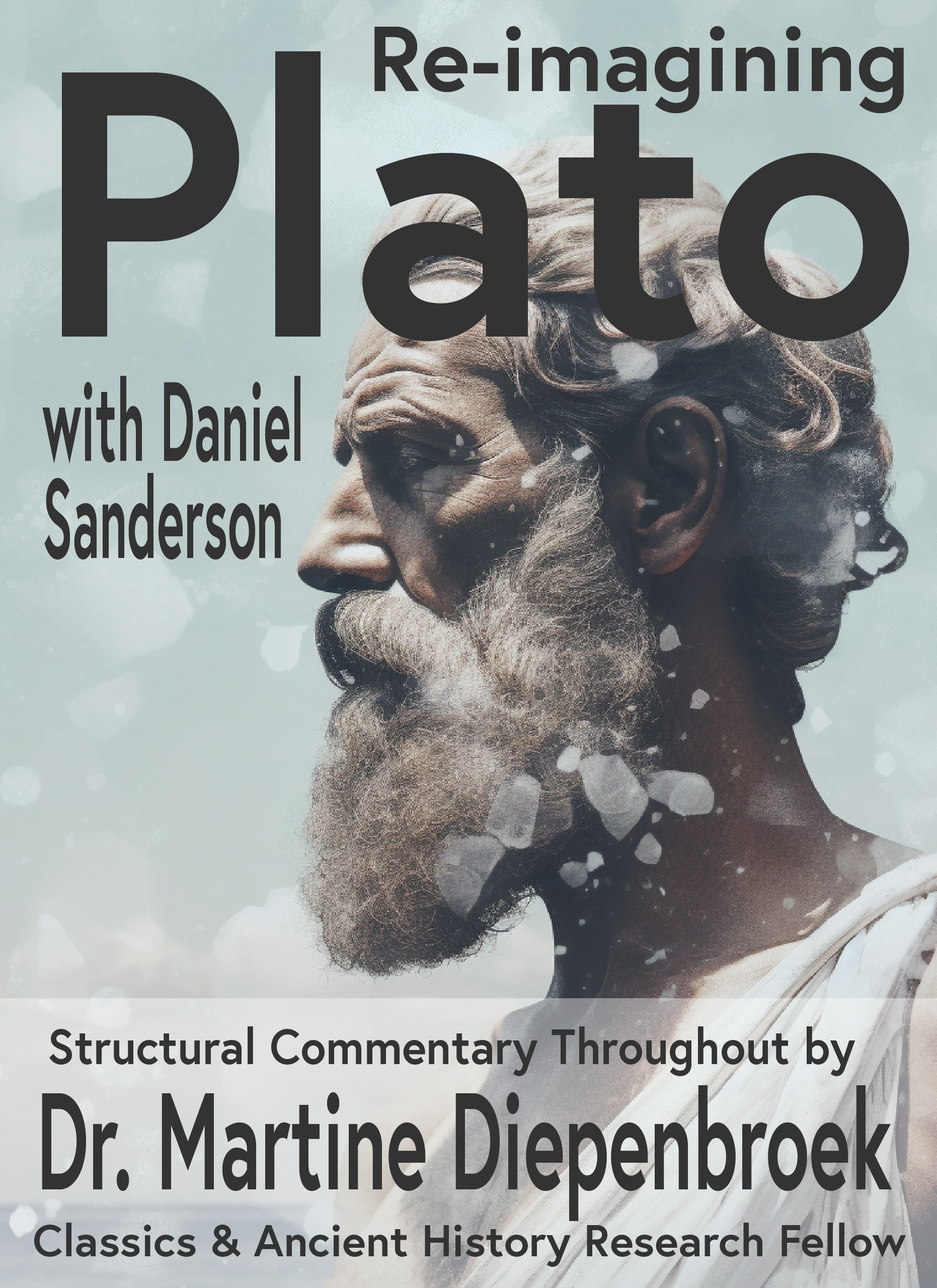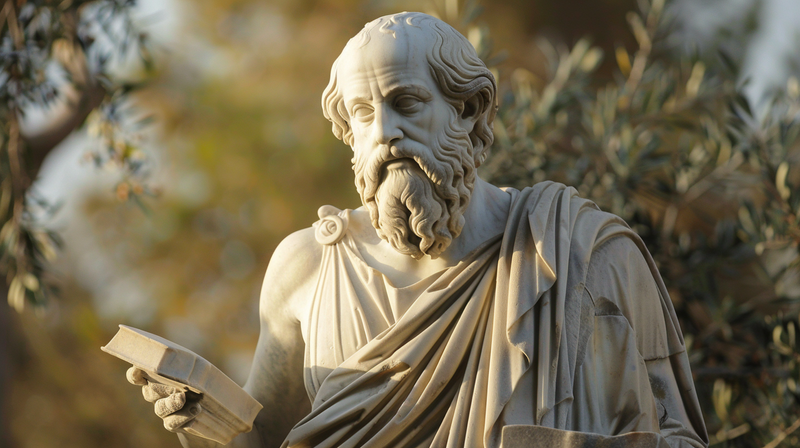Plato's Philosophical Anthropology and Its Connections to Anthropological Concepts
Plato’s work has had a profound influence on Western philosophy and has significantly contributed to the field of philosophical anthropology. His exploration of the nature of the soul, the mind-body relationship, and the ideal society provides a rich foundation for comparing his ideas with key anthropological concepts. This article examines the main definitions of philosophical anthropology in Plato’s thought and relates each to important concepts within the field of anthropology, thereby highlighting the enduring relevance of Plato’s insights.
Human Essence and the Soul
Plato identifies the essence of a human being with the soul, viewing the material body as a prison from which the soul longs to be liberated. The soul is the true self, striving to contemplate pure, hyperuranic ideas[1]. This concept aligns with the anthropological study of cultural beliefs and cosmology. Cultural anthropologists investigate how different societies conceptualize the essence of existence and the afterlife, reflecting on the separation of material and spiritual realms[2]. For example, many indigenous cultures maintain a dualistic worldview, where the spiritual and material worlds are interconnected but distinct, influencing their rituals, social structures, and worldviews[3]. The Hopi people of North America, for instance, believe in a spiritual essence that exists beyond the physical body, which plays a central role in their religious ceremonies and cultural practices[4].
Mind-Body Dualism
Plato’s introduction of an irreducible dualism between the mind and the body is a cornerstone of his philosophical anthropology. He posits that the soul, distinct from the body, seeks knowledge and wisdom, which are hindered by the material body’s limitations[5]. This idea can be related to the concept of mind-body dualism in cultural anthropology, where various cultures distinguish between the physical and spiritual aspects of human beings[6]. Such dualism often leads to different practices and rituals, reflecting how societies understand the relationship between the mind and the body[7]. For instance, in many healing practices around the world, physical ailments are seen as connected to spiritual or psychological states[8]. Traditional Chinese Medicine, for example, views health as a balance between the body and spirit, and treatments often involve both physical and spiritual components[9].
Theory of Recollection
In dialogues like "Meno" and "Phaedo," Plato presents the idea that the soul, before birth, has knowledge of the Forms. Learning is thus a process of recollecting what the soul already knows[10]. This concept can be compared to the anthropological study of social memory and collective memory. Anthropologists explore how societies remember and pass on knowledge, traditions, and values across generations[11]. Social memory involves the transmission of cultural knowledge and practices that shape communal identities and historical consciousness[12]. For instance, oral traditions in many cultures serve as a repository of communal wisdom and historical narratives, echoing Plato’s notion of recollection[13]. The griot tradition in West Africa, where storytellers preserve the history and knowledge of their people through oral narratives, exemplifies this concept[14].
Tripartite Soul
In "The Republic," Plato divides the soul into three parts: the rational, the spirited, and the appetitive[15]. Each part corresponds to different aspects of human behavior and society: rationality and wisdom, courage and honor, and desire and basic needs, respectively[16]. This division mirrors structural functionalism in anthropology, which examines how different aspects of society function together to maintain social order and stability[17]. Structural functionalism posits that each part of society has a role to play in sustaining the whole, similar to how Plato’s parts of the soul contribute to the overall harmony of the individual[18]. For example, the division of labor in various cultures ensures that different social roles contribute to the community's well-being[19]. In Polynesian societies, social roles are distinctly divided among chiefs, priests, and commoners, each contributing to the community's overall functioning and stability[20].
Transmigration of Souls
According to the "Phaedrus," souls undergo a cycle of rebirths, moving from one body to another based on their moral and intellectual achievements in previous lives[21]. This concept aligns with anthropological studies of rites of passage and life cycles, which investigate how different cultures understand and mark transitions between different stages of life[22]. Beliefs in reincarnation or the continuity of the soul are common in many societies and play a crucial role in shaping their religious and social practices[23]. For instance, Hindu and Buddhist traditions emphasize the cycle of samsara and the karmic implications of one’s actions, paralleling Plato’s ideas of transmigration[24]. In these traditions, life is viewed as a series of rebirths, each influenced by the actions performed in previous lives, which shapes moral and ethical behavior within these cultures[25].
Virtue and the Good Life
For Plato, the good life is achieved through the cultivation of virtues, aligning the soul with the Form of the Good[26]. This is the highest aim of human existence[27]. This concept relates to the ethnography of morality, where anthropologists study how different cultures define and pursue moral values, ethics, and the ideal way of living[28]. Ethnographies often reveal how cultural norms and values shape individuals' conceptions of virtue and the good life[29]. For example, in many societies, the notion of honor and communal well-being guides ethical behavior and the pursuit of a fulfilling life[30]. Among the Maasai of East Africa, virtues such as bravery, loyalty, and communal responsibility are highly valued and form the basis of their moral and ethical framework[31].
Philosopher-King
In "The Republic," Plato argues that the ideal ruler is a philosopher-king, someone whose soul is aligned with the Forms and who seeks knowledge and justice above personal gain[32]. This idea connects with political anthropology, which explores the nature of leadership, authority, and governance in different societies[33]. Political anthropologists study how wisdom and ethical rule contribute to social order and stability, reflecting Plato’s vision of the philosopher-king[34]. For example, the concept of the “Big Man” in Melanesian societies highlights how charismatic leaders gain influence through their wisdom and ability to maintain social harmony[35]. In such societies, leadership is often based on personal attributes and the ability to mediate conflicts, mirroring Plato’s ideal of a ruler guided by knowledge and justice[36].
The Allegory of the Cave
Plato’s allegory of the cave, found in "The Republic," illustrates the philosopher’s journey from ignorance to knowledge, symbolizing the ascent of the soul from the darkness of the material world to the light of true understanding[37]. This allegory reflects the anthropological study of symbols and myths, which investigates how symbolic narratives shape cultural beliefs, social structures, and individual identities[38]. Symbols and myths serve as frameworks for understanding reality and guiding behavior in many cultures[39]. For example, creation myths often provide a cosmological explanation of the world, offering insights into a society’s values and worldview[40]. The Navajo creation story, which describes the emergence of the world through successive worlds of increasing complexity and order, serves as a foundational narrative that shapes Navajo cultural identity and values[41].
Conclusion
Plato’s philosophical anthropology provides a rich repository of concepts that resonate with key themes in the field of anthropology. His exploration of the soul, mind-body dualism, and the ideal society offers valuable insights into the human condition that are echoed in anthropological studies of culture, memory, morality, and governance. By examining these connections, we can appreciate the enduring relevance of Plato’s thought and its contributions to our understanding of humanity.
References
Plato, Phaedo, trans. G.M.A. Grube (Indianapolis: Hackett Publishing Company, 1977). ↩︎
Clifford Geertz, The Interpretation of Cultures (New York: Basic Books, 1973). ↩︎
Mircea Eliade, The Sacred and the Profane: The Nature of Religion (New York: Harcourt, 1959). ↩︎
E. Richard Sorenson, "Hopi Space and Time: Myth and Reality," American Anthropologist 70, no. 3 (1968): 469-488. ↩︎
Plato, Phaedrus, trans. R. Hackforth (Cambridge: Cambridge University Press, 1952). ↩︎
Sherry B. Ortner, “Is Female to Male as Nature Is to Culture?” in Woman, Culture, and Society, ed. Michelle Zimbalist Rosaldo and Louise Lamphere (Stanford: Stanford University Press, 1974), 67-87. ↩︎
Arthur Kleinman, Patients and Healers in the Context of Culture (Berkeley: University of California Press, 1980). ↩︎
Nancy Scheper-Hughes and Margaret M. Lock, “The Mindful Body: A Prolegomenon to Future Work in Medical Anthropology,” Medical Anthropology Quarterly 1, no. 1 (1987): 6-41. ↩︎
Paul U. Unschuld, Medicine in China: A History of Pharmaceutics (Berkeley: University of California Press, 1986). ↩︎
Plato, Meno, trans. G.M.A. Grube (Indianapolis: Hackett Publishing Company, 1981). ↩︎
Paul Connerton, How Societies Remember (Cambridge: Cambridge University Press, 1989). ↩︎
Maurice Halbwachs, On Collective Memory, trans. Lewis A. Coser (Chicago: University of Chicago Press, 1992). ↩︎
Jan Vansina, Oral Tradition as History (Madison: University of Wisconsin Press, 1985). ↩︎
David C. Conrad, Empires of Medieval West Africa: Ghana, Mali, and Songhay (New York: Facts on File, 2005). ↩︎
Plato, The Republic, trans. Allan Bloom (New York: Basic Books, 1968). ↩︎
Ibid. ↩︎
Emile Durkheim, The Division of Labor in Society, trans. W.D. Halls (New York: Free Press, 1984). ↩︎
Bronislaw Malinowski, Argonauts of the Western Pacific (New York: E.P. Dutton & Co., 1922). ↩︎
A.R. Radcliffe-Brown, Structure and Function in Primitive Society (London: Cohen & West, 1952). ↩︎
Margaret Mead, Coming of Age in Samoa (New York: William Morrow & Co., 1928). ↩︎
Plato, Phaedrus. ↩︎
Arnold van Gennep, The Rites of Passage, trans. Monika B. Vizedom and Gabrielle L. Caffee (Chicago: University of Chicago Press, 1960). ↩︎
Victor Turner, The Ritual Process: Structure and Anti-Structure (Chicago: Aldine Publishing Company, 1969). ↩︎
Wendy Doniger, The Laws of Manu (London: Penguin Books, 1991). ↩︎
Gavin Flood, An Introduction to Hinduism (Cambridge: Cambridge University Press, 1996). ↩︎
Plato, The Republic. ↩︎
Ibid. ↩︎
Didier Fassin, A Companion to Moral Anthropology (Oxford: Wiley-Blackwell, 2012). ↩︎
Richard Shweder, “Ethical Relativism: Is There a Defensible Version?” Ethics 6, no. 2 (1991): 215-232. ↩︎
Philippe Descola, Beyond Nature and Culture, trans. Janet Lloyd (Chicago: University of Chicago Press, 2013). ↩︎
Thomas Spear, Being Maasai: Ethnicity and Identity in East Africa (Oxford: James Currey, 1993). ↩︎
Plato, The Republic. ↩︎
Abner Cohen, Custom and Politics in Urban Africa: A Study of Hausa Migrants in Yoruba Towns (London: Routledge, 1969). ↩︎
James C. Scott, The Art of Not Being Governed: An Anarchist History of Upland Southeast Asia (New Haven: Yale University Press, 2009). ↩︎
Marshall Sahlins, Poor Man, Rich Man, Big Man, Chief: Political Types in Melanesia and Polynesia (Comparative Studies in Society and History, 1963). ↩︎
Marshall Sahlins, Islands of History (Chicago: University of Chicago Press, 1985). ↩︎
Plato, The Republic. ↩︎
Clifford Geertz, “Religion as a Cultural System,” in The Interpretation of Cultures (New York: Basic Books, 1973), 87-125. ↩︎
Victor Turner, The Forest of Symbols: Aspects of Ndembu Ritual (Ithaca: Cornell University Press, 1967). ↩︎
Bronislaw Malinowski, Myth in Primitive Psychology (New York: W.W. Norton & Company, 1926). ↩︎
Paul G. Zolbrod, Diné Bahane': The Navajo Creation Story (Albuquerque: University of New Mexico Press, 1984). ↩︎

Plato Re-Imagined
This course includes 32 lectures covering most of Plato's dialogues and allowing the student to return to something divine. Divinity should resonate with secular and religious leaders alike. I present a compatible approach in my lecture on Consilience.
Also included with this course is a free book. If you pay for the course, you will get a physical copy of the book for free, mailed to your chosen address — anywhere on the planet!

